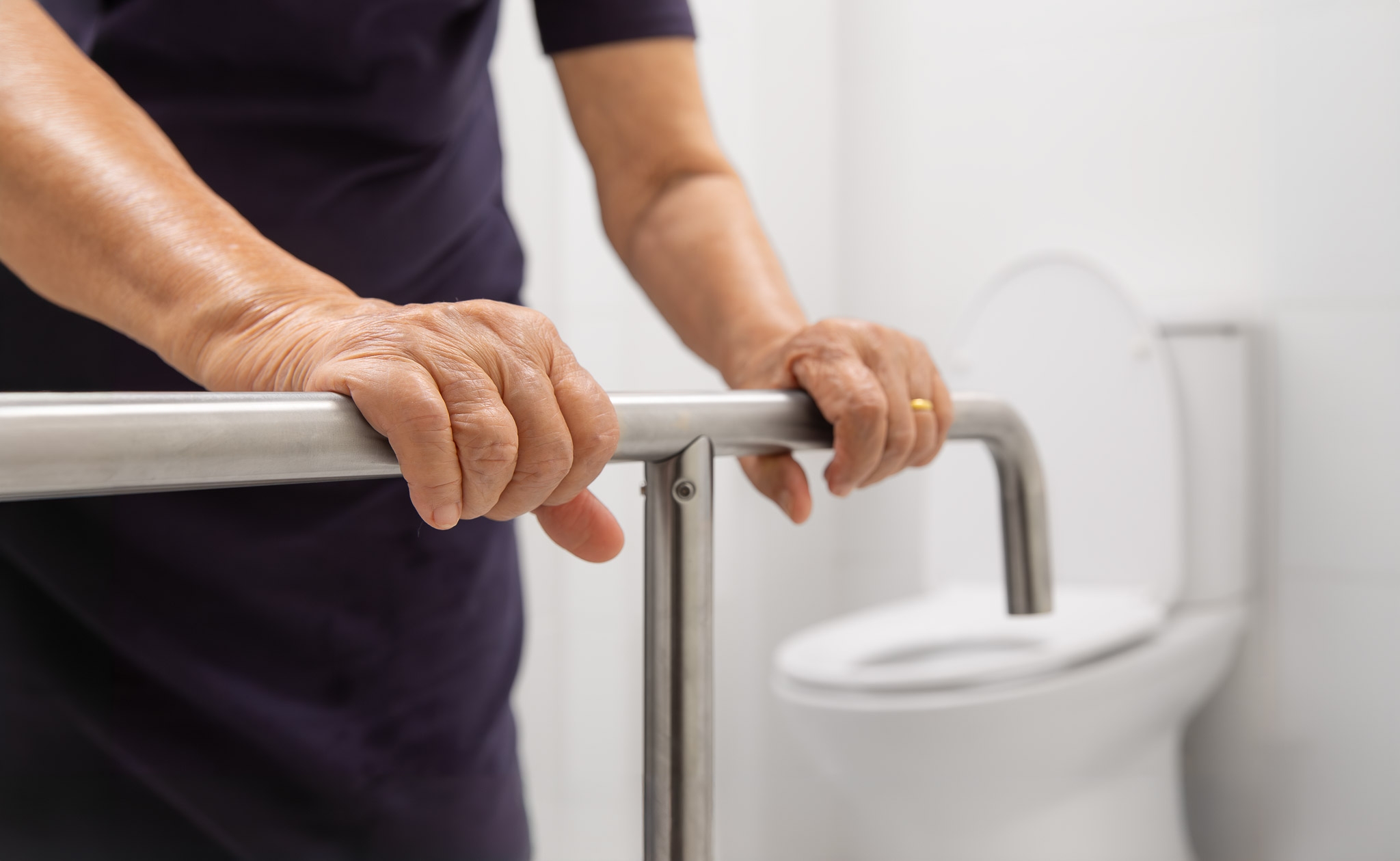
Published: Tuesday 19 August 2025
What are the AS1428.1?
AS1428.1 Design for access and mobility, Part 1: General requirements for access - New building work is an Australian Standard that sets the design requirements for access and mobility within public buildings. It is a crucial standard ensuring that buildings are accessible to all people, including those with disabilities.
What are some of the key aspects of the AS1428.1?
Continuous Accessible Path of Travel:
- This ensures that people with disabilities can move safely and independently throughout a building. Ramps:
- The standard specifies requirements for ramp gradients, landings, and handrails. Stairs:
- AS 1428.1 outlines requirements for stair design, including handrails, nosings, and tactile indicators. Handrails:
- The standard details the placement, dimensions, and grip requirements for handrails. Accessible Sanitary Facilities:
- AS 1428.1 provides guidelines for the design of accessible toilets and showers. Signage:
- The standard addresses the design and placement of signs to assist people with disabilities.
How should AS1428.1 be applied?
AS 1428.1:2021 provides the minimum design requirements for building work to enable access for people with disabilities in Class 2-9 buildings. As such, it does not apply to Class 1 and 2 buildings, which are single dwellings (like houses) and those with multiple units (like apartments), respectively.
- Class 1 Dwellings: These include standalone houses, townhouses, and duplexes.
- Class 2 Dwellings: These include buildings containing two or more sole-occupancy units, such as apartments.
The primary reason for this exemption is that these dwellings are generally private residences, and the standard is designed with public spaces in mind.
What are the updates to the AS1428.1 2021?
Some of the clarifications and updated requirements include, but are not limited to:
- Timber boards – installation requirements
- Threshold ramps – a total length of 300mm from the face of the door
- Walkway edges include kerb rails of 65-75mm high or 150mm high. Low walls of 450mm are no longer specified.
- Handrail heights are allowed to vary on landings and include a 10mm construction tolerance
- Handrail diameters are increased to 52mm to accommodate construction methods
- Door reveals are required to have a max depth of 300mm
- Viewing panel sizes in doors are defined
- Grabrails can have a greater variation in height of 800-820mm
- Backrest requirements and dimensions have greater details
- Basins are allowed to intrude into shower circulation spaces as well as toilet pan circulation spaces
- Gradients of bathroom floors where a linear drain is installed are to be 1:50-1:90
- Heights of shower outlets have a greater range
- More information on back flow devices
Reference: Revised Australian Standard released in June AS1428.1 2021 – Design for access and mobility general requirements for access – New building work, posted July 26, 2021, Architecture and Access, URL: https://architectureandaccess.com.au/revised-australian-standard-released-in-june-as1428-1-2021-design-for-access-and-mobility-general-requirements-for-access-new-building-work/
Where can I find the AS428.1: 2021?
AS1428.1 can be purchased from Standards Australia using the following link: https://www.standards.org.au/standards-catalogue/standard-details?designation=as-1428-1-2021
What are the Livable Housing Guidelines?
The Livable Housing Guidelines provide a framework for designing and building homes that are safer, more comfortable, and easier to access for all people, including those with disabilities and older adults. While these guidelines are not mandatory, they offer valuable advice for new dwellings to ensure they can accommodate occupants' changing needs over time. By considering these standards and guidelines during the renovation of private dwellings, homeowners can create safer, more inclusive living environments that cater to the needs of all residents.
These guidelines emphasise several key principles:
- Step-free access: Ensuring there are no steps at the entrance or within the home.
- Clear doorways and passages: Wide enough to accommodate wheelchairs and mobility aids.
- Bathrooms designed for accessibility: Including provision for future installation of grab rails and other support features.
- Reinforced walls: To support the addition of grab rails and other modifications.
What is the Livable Housing Design Standard and when does it apply?
Livable housing design standards are mandatory requirements for new homes and are based on the Livable Housing Design Guidelines (silver level. The Livable Housing Design Standard outlines the technical requirements and explanatory information to support the implementation of these standards in new builds. The livable housing design has been embedded in Volumes One and Two of the National Construction Code.
Areas that the Standard covers includes:
- Providing step-free access to the home.
- Making doorways and hallways easier to use for people with reduced mobility.
- Providing extra space in the bathroom and toilet.
- Wall reinforcing in the bathroom and toilet, to make it easier to install grabrails if needed in the future.
You can find a copy of the Livable Housing Design Standard at this link: https://ncc.abcb.gov.au/sites/default/files/resources/2023/livable-housing-design-20221219.pdf
What guidelines or standards should be considered when renovating or modifying private dwellings?
While AS1428.1 does not apply to private dwellings, and Livable Housing Guidelines are advisory, there are still important considerations when renovating private residences to improve accessibility. By considering these standards and guidelines during the renovation of private dwellings, homeowners can create safer, more inclusive living environments that cater to the needs of all residents.
Renovations of private dwellings should consider the following:
- Future-proofing: Planning for potential mobility issues or aging in place.
- Universal Design: Ensuring that renovations benefit all users, regardless of age or ability.
- Compliance with Local Regulations: Understanding any local building codes or regulations that may impact the renovation.
What is the Home Modifications Clearing House?
The Home Modifications Clearinghouse (Homemods.info) is an important resource in Australia focused on enhancing home modifications for older individuals and those with disabilities. Its mission is to create accessible living environments that support independence and safety.
The Clearinghouse
- recognises that home modifications are essential for enabling individuals to live safely and independently, ranging from simple adjustments to extensive renovations. These changes are vital for the autonomy and participation of older adults and people with disabilities in daily life.
- provides research, guidelines, education, and networking opportunities to various stakeholders, including homeowners, health professionals, and policymakers. It emphasises evidence-based practices and impacts community policies related to accessible housing.
It is important for occupational therapists to understand the evidence which underpins sound recommendations. Occupational therapists working with clients who can benefit from home modifications are encouraged to register with the Home Modifications Clearinghouse at www.homemods.info.
Learn more about the Home Modifications Clearinghouse through this link.
Related topics

15 January 2025
DHAC: Assistive Technologies and Home Modifications Scheme for in-home aged care
The content in this report reflects the output from a co-design process that sought input from older Australians and their families and informal carers, industry professionals and government stakeholders.

3 January 2025
Medicare Overview for Occupational Therapists
This document is intended to support practitioners to understand the Medicare programs available to occupational therapists, their eligibility requirements including endorsement, any treatment guidelines associated with each, and where to find additional information.

15 October 2025
Member Update - Aged Care (October 2025)
A new Aged Care Act will be implemented on November 1st. This introduces the new home-based aged care program, Support at Home, which will replace the existing Home Care Packages and Short Term Restorative Care programs. OTA has prepared practice resources to support our profession during this transition. These resources provide a summary of the Support at Home Program's key details and offer considerations for clinicians to best prepare for the new reforms.

